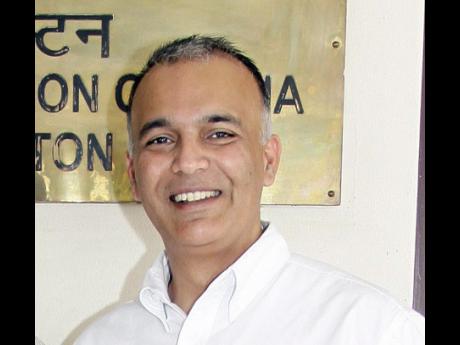Knowledge through time travel
Books take us on a quest for acquiring knowledge, enlightening the mind and opening windows to a world of imagination and endless possibilities, but when these are complemented by living those chapters in person, the resultant experiences can be a walk back in time.
Museums are such a medium, bringing life and the third dimension to paper and ink, urging and inviting one to explore, engage, find answers to some questions and get intrigued ... one might feel like time travels in Dr Who, the BBC, produced science fiction series.
May 18 was celebrated as International Museums Day, a day designated by the International Council on Museums (ICOM), and this year's theme was 'Contested Histories: Saying the Unspeakable in Museums'.
"Most countries have national museums that can answer these questions and enable people to learn about and discuss their history and also write their own history," said Jonathan Greenland, director, National Museum Jamaica, Institute of Jamaica. "In Jamaica, we have a string of smaller community-based museums that operate in a slightly different way."
From collections of artefacts, books, archival material, objects that chart the course of human evolution and history, technology, science, music, and numerous other repositories, museums keep memories of the past relevant for the contemporary society.
"Museums offer a neutral space to deliberate about issues of the past," said Captain Staci-Marie Dehaney, curator of the Jamaica Military Museum and Library (JMML). "They operate as an informal space of learning for both the young and adults alike with an interest in the past."
Jamaica the rock on the face of Earth has rich, deep-rooted and diverse stories about her past to tell the world, and the museums dotting the island become those story tellers.
"Our mission is to make everybody, especially Jamaicans, but also our international visitors, interested and engaged in Jamaican history," said Greenland. "It seems essential to us that citizens must be aware of their own history their family history, their community history, and their national history.
"It (museum) is an essential part of an enlightened citizenry to know where they come from," he continued, adding that questions like "Where do we come from?" or "What are we?" are important questions that every museum can pose and respond to.
"Jamaican history is absolutely fascinating, so we have a gold mine of material to share," Greenland said.
According to Dehaney, visits to the museums are experiences beyond the physical manifestations.
"Through objects, visitors are transported through the intricate details of the past. Supported by research, these objects tell the stories of the voiceless and oftentimes can be the bridge between an official account and the realities of the past."
Through the objects displayed in the museums, stories come to life, names get faces curated exhibitions provide the media through which the past can connect with the present. These interactions, according to the experts, are essential to open the minds of the people.
"Using an artefact, oral histories, and text, we are presented with the opportunity to reconcile matters of the past and make our own conclusions based on the evidence presented," said Dehaney. "There is something enigmatic and captivating about an object in a museum as they tell many stories."
WAR TALES
At the JMML, stories of technological development in weaponry, and of the soldiers who used them, stories of their victims and the environment they existed in are told by the objects displayed.
"Through the wear and tear of objects acquired in their active life, we learn so much," Dehaney said. " ... Of these silent memoirs, quietly keeping the secrets of men of war and beyond."
Greenland said that through the museums, they are seeking to make everyone a "citizen historian", thoroughly conscious and aware of their own history.
"In order to address this, we use four separate museums: Port Royal; Spanish Town; East Street, Kingston; and National Museum West in Montego Bay," he said. "We also put on temporary exhibitions, produce catalogues and books, organise discussions and workshops, do outreach programmes; as well as pursue a very active conservation programme."
But, according to Greenland, there is still work to be done to generate the desired interest among the people beyond the school groups.
"We are still working towards having a proper national museum in Kingston that is accessible and exciting," he said.
The journey continues.








